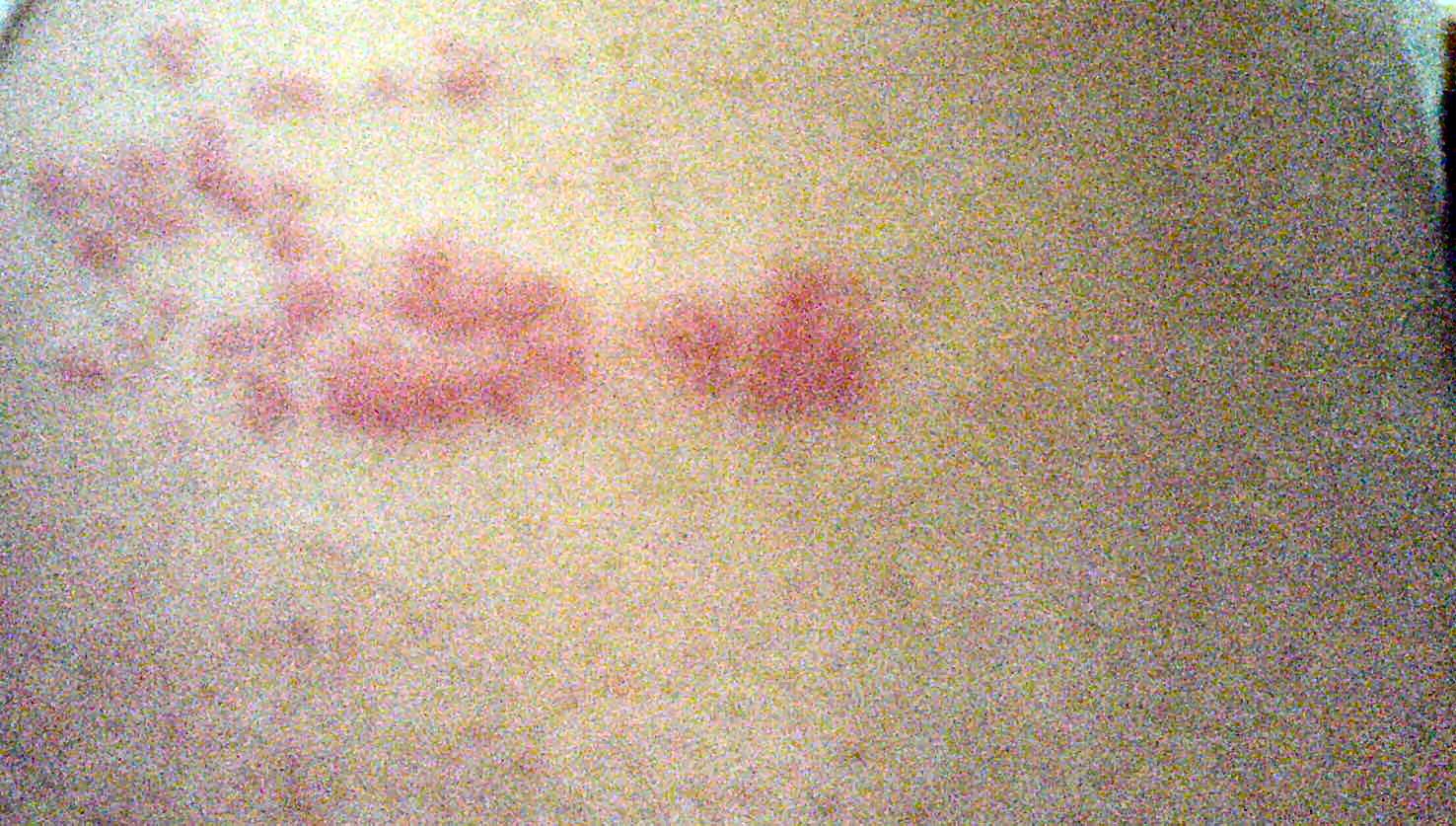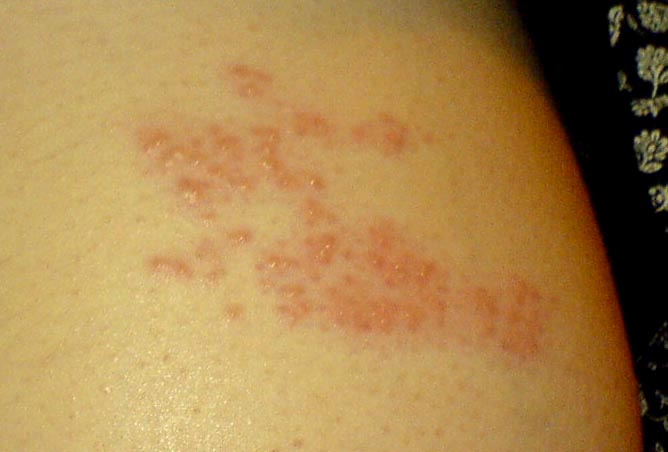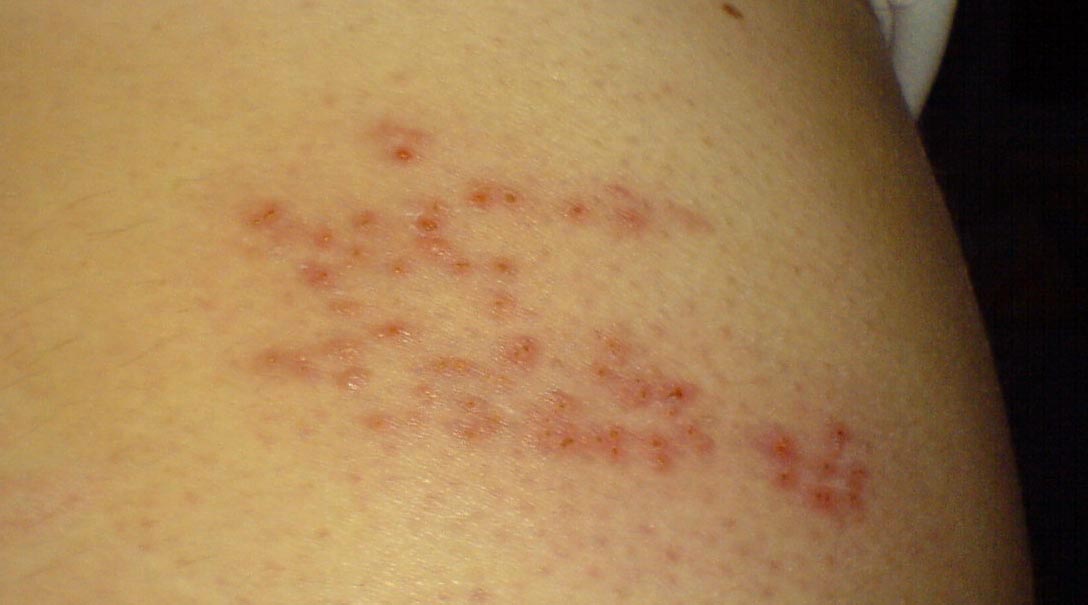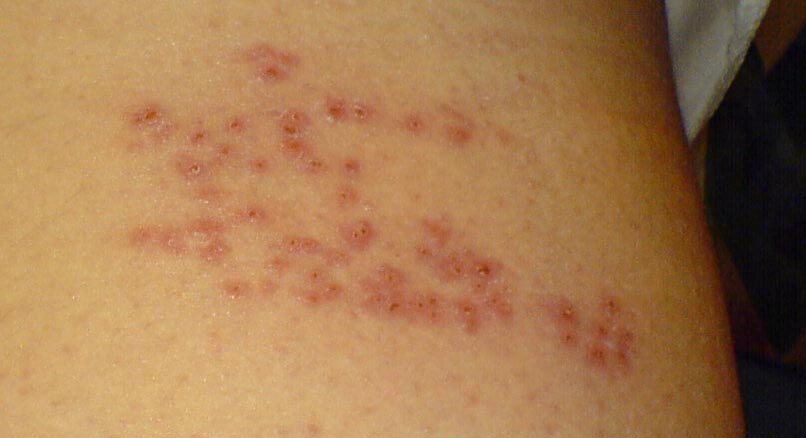Herpes zoster natural history
|
Herpes zoster Microchapters |
|
Diagnosis |
|---|
|
History and Symptoms |
|
Treatment |
|
Case Studies |
|
Herpes zoster natural history On the Web |
|
American Roentgen Ray Society Images of Herpes zoster natural history |
|
Risk calculators and risk factors for Herpes zoster natural history |
Editor-In-Chief: C. Michael Gibson, M.S., M.D. [1]; L. Katie Morrison, MD; Associate Editor(s)-In-Chief: Cafer Zorkun, M.D., Ph.D. [2]
Overview
The earliest symptoms (constituting the prodrome) of shingles include headache, sensitivity to light, fever, and malaise, all of which may be followed by itching, tingling, and pain within one to seven days.The rash and pain usually subside within 3 to 5 weeks. Many patients develop a painful condition called postherpetic neuralgia, which is often difficult to manage. Postherpetic neuralgia is most common complication of Herpes zoster.
Natural History
The earliest symptoms (constituting the prodrome) of shingles include headache, sensitivity to light, fever, and malaise, all of which may be followed by itching, tingling, and pain within one to seven days. The initial phase is followed, in most cases, by development of the characteristic skin rashes of herpes zoster. The rash is visually similar to hives, and follow a distribution near dermatomes, commonly occurring in a stripe or belt-like pattern. The rash evolves into vesicles or small blisters filled with serous fluid. The vesicles are generally painful, and their development is often associated with the occurrence of anxiety and further flu-like symptoms, such as fever, tiredness, and generalized pain. The vesicles eventually become hemorrhagic (filled with blood), and crust over within seven to 10 days. As the crusts fall off, patients are rarely left with scarring and pigmented skin.
| Day 1 | Day 2 | Day 5 | Day 6 |
|---|---|---|---|

|

|

|

|
Prognosis
The rash and pain usually subside within 3 to 5 weeks. Many patients develop a painful condition called postherpetic neuralgia, which is often difficult to manage. In some patients, herpes zoster can reactivate subclinically, with pain in a dermatomal distribution without rash. This condition is known as zoster sine herpete, and may be more complicated, affecting multiple levels of the nervous system and causing multiple cranial neuropathies, polyneuritis, myelitis, or aseptic meningitis. Sometimes serious effects including partial facial paralysis (usually temporary), ear damage, or encephalitis may occur. Shingles on the upper half of the face (the first branch of the trigeminal nerve) may result in eye damage and require urgent ophthalmological assessment. Ocular complications occur in approximately one half of patients with involvement of the ophthalmic division of the trigeminal nerve.
Approximately 1 to 4% of people with herpes zoster get hospitalized for complications. Older adults and people with compromised or suppressed immune systems are more likely to get hospitalized. A study of 1994 California data found hospitalization rates of 2.1 per 100,000 person-years, rising to 9.3 per 100,000 person-years for ages 60 and up.[1] An earlier Connecticut study found a higher hospitalization rate; the difference may be due to the prevalence of HIV in the earlier study, or to the introduction of antivirals in California before 1994.[2] About 30% of all people hospitalized with herpes zoster are those with compromised or suppressed immune systems. A recent study estimated that there are 96 deaths each year in which herpes zoster was the actual underlying cause (0.28-0.69 per 1 million population). Almost all the deaths occurred in elderly people or those with compromised or suppressed immune systems[3].
Since shingles is a reactivation of a virus contracted previously—often decades earlier—it cannot be induced by exposure to another person with shingles or chicken pox. Those with active blisters, however, can spread chicken pox to others who have never had that condition and who have not been vaccinated against it.[4] Although 2nd and even 3rd episodes of herpes zoster can occur, the annual incidence of recurrence is not known. Repeated attacks of herpes zoster are rare,[5] and it is extremely rare for patients to suffer more than three recurrences.[6].
Complications
In one study, it was estimated that 26% of patients who contract herpes zoster eventually present with complications. Postherpetic neuralgia arises in approximately 20% of patients.[7] Postherpetic neuralgia (PHN) is the most common complication of herpes zoster. It is a persistent pain in the area where the rash once was. PHN is diagnosed in people who have pain that persists after their rash has resolved. Some define PHN as any duration of pain after the rash resolves; others define it as duration of pain for more than 30 days, or for more than 90 days after rash onset. PHN can last for weeks or months and occasionally, for many years.
A person's risk of having PHN after herpes zoster increases with age. Older adults are more likely to have PHN and to have longer lasting and more severe pain. Approximately 13% (and possibly more) of people 60 years of age and older with herpes zoster will get PHN. PHN is rare in people younger than 40 years old. Other predictors of PHN include the level of pain a person has when they have zoster rash and the size of their rash.
Other complications of herpes zoster include:
- Ophthalmic involvement with acute or chronic ocular sequelae (herpes zoster ophthalmicus). These complications include:[8]
- Mucopurulent conjunctivitis
- Episcleritis
- Keratitis
- Anterior uveitis
- Cranial nerve palsies of the third, fourth and sixth cranial nerves may occur, affecting extraocular motility.
- Bacterial superinfection of the lesions, usually due to Staphylococcus aureus and, less commonly, due to group A beta hemolytic streptococcus;
- Cranial and peripheral nerve palsies; and
- Visceral involvement, such as meningoencephalitis, pneumonitis, hepatitis, acute retinal necrosis.
People with compromised or suppressed immune systems are more likely to have complications from herpes zoster. They are more likely to have severe rash that lasts longer. Also, they are at increased risk of developing disseminated herpes zoster.
References
- ↑ Coplan P, Black S, Rojas C (2001). "Incidence and hospitalization rates of varicella and herpes zoster before varicella vaccine introduction: a baseline assessment of the shifting epidemiology of varicella disease". Pediatr Infect Dis J. 20 (7): 641–5. PMID 11465834.
- ↑ Weaver BA (2007). "The burden of herpes zoster and postherpetic neuralgia in the United States". J Am Osteopath Assoc. 107 (3 Suppl): S2–7. PMID 17488884.
- ↑ Mahamud A, Marin M, Nickell SP, Shoemaker T, Zhang JX, Bialek SR (2012). "Herpes zoster-related deaths in the United States: validity of death certificates and mortality rates, 1979-2007". Clin Infect Dis. 55 (7): 960–6. doi:10.1093/cid/cis575. PMID 22715169.
- ↑ Zamula, Evelyn (2005). "Shingles:An Unwelcome Encore". United States Food and Drug Administration. Retrieved 2007-04-10.
- ↑ Stankus, SJ (2000). "Management of Herpes Zoster (Shingles) and Postherpetic Neuralgia". American Family Physician. 61 (8): 2437–2447. PMID 10794584. Retrieved 2007-04-08. Unknown parameter
|coauthors=ignored (help) - ↑ Steiner I, Kennedy PG, Pachner AR (2007). "The neurotropic herpes viruses: herpes simplex and varicella-zoster". Lancet Neurol. 6 (11): 1015–28. doi:10.1016/S1474-4422(07)70267-3. PMID 17945155.
- ↑ Volpi A (2007). "Severe complications of herpes zoster" (PDF). Herpes. 14 (Suppl 2): 35A–9A. PMID 17939894.
- ↑ Johnson, RW & Dworkin, RH (2003). "Clinical review: Treatment of herpes zoster and postherpetic neuralgia". BMJ. 326 (7392): 748. doi:10.1136/bmj.326.7392.748.